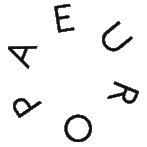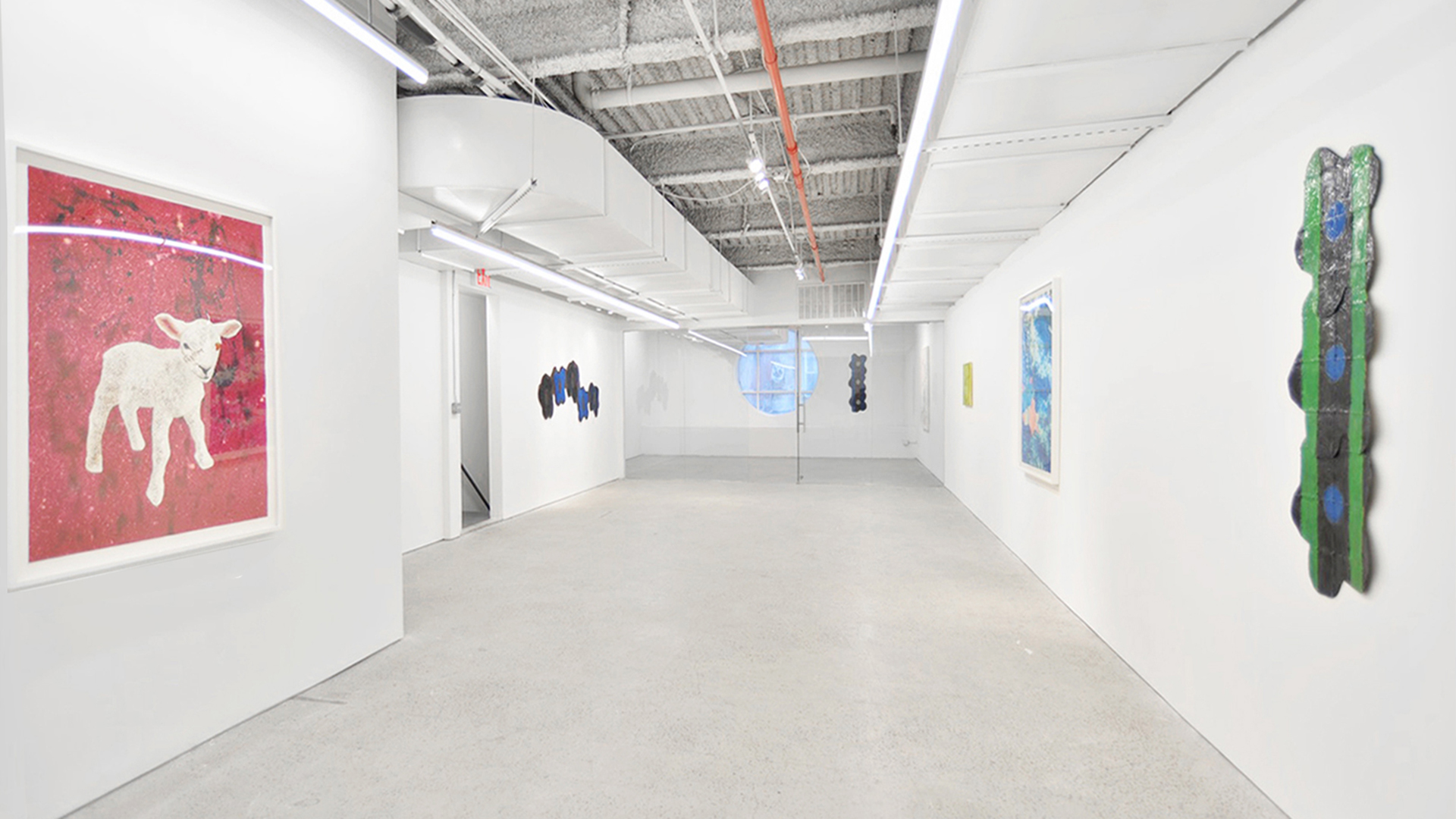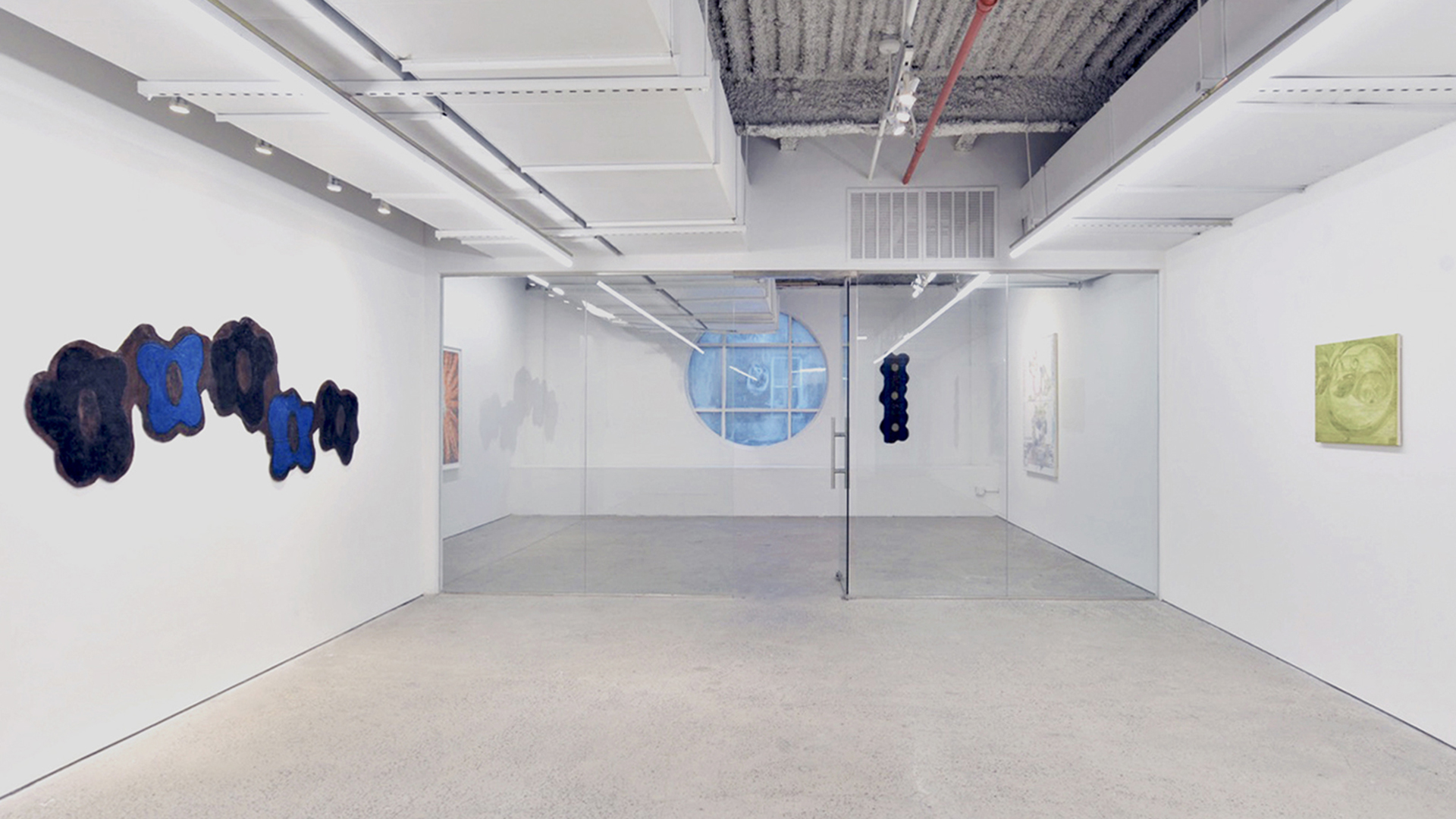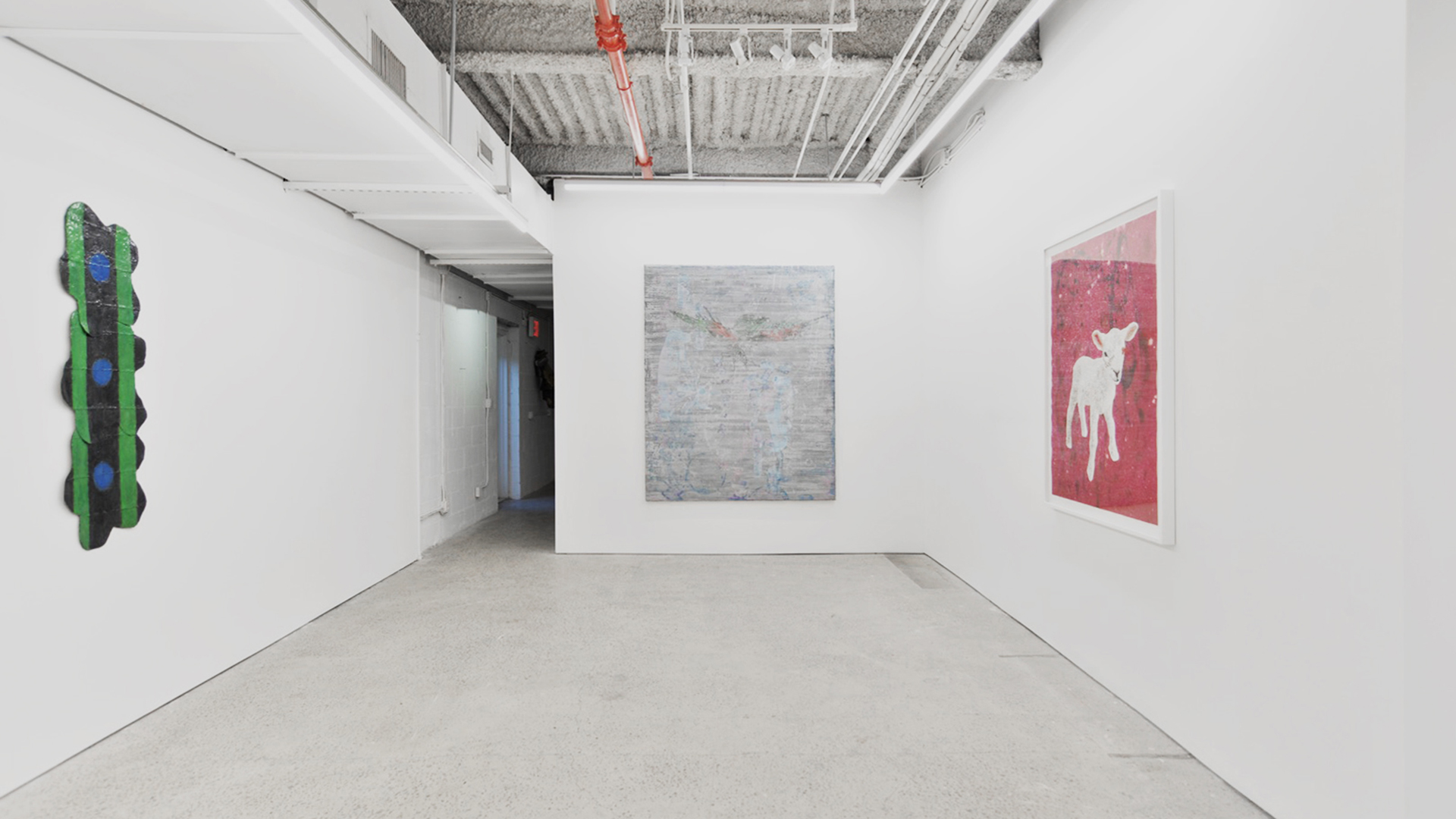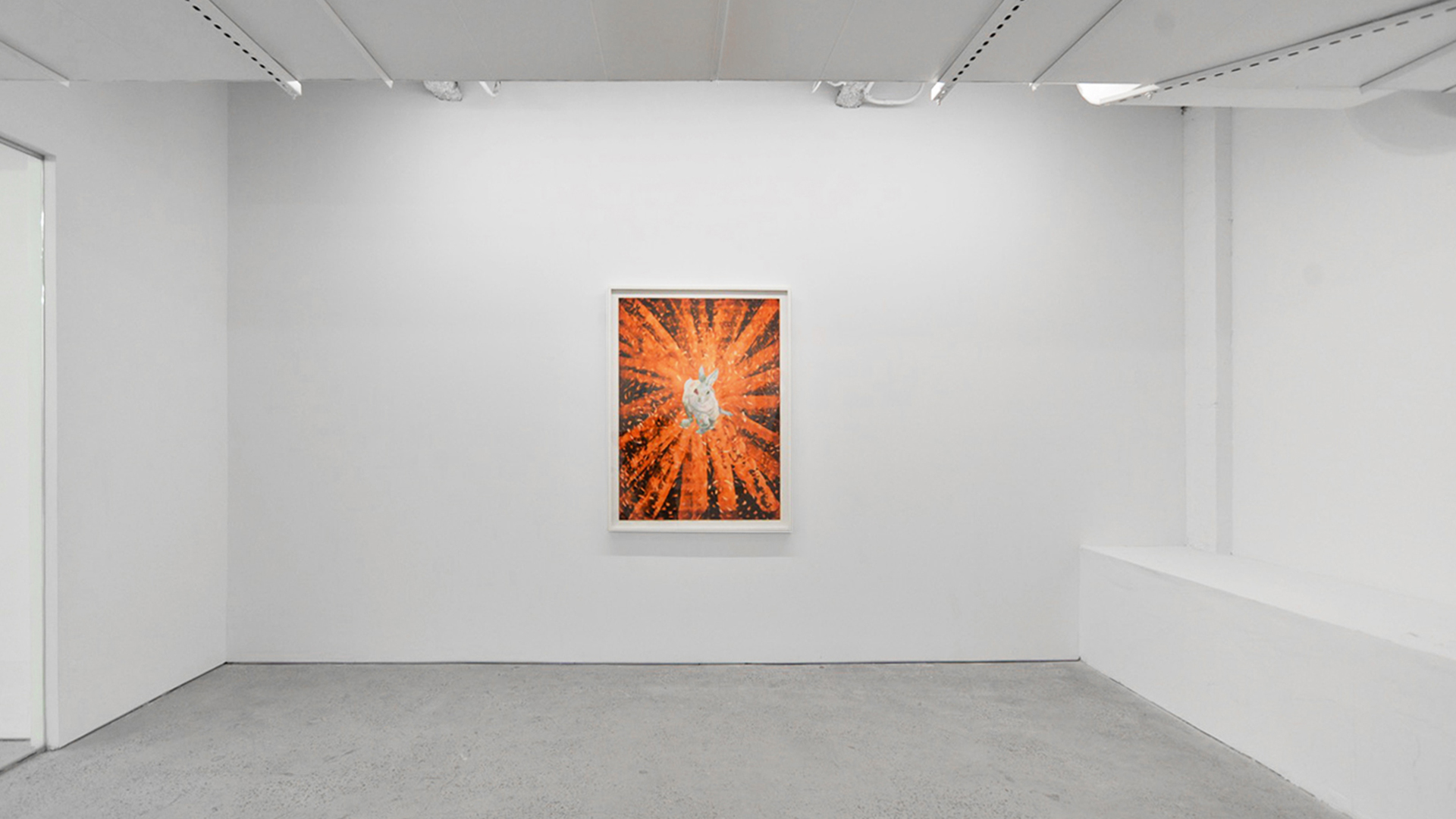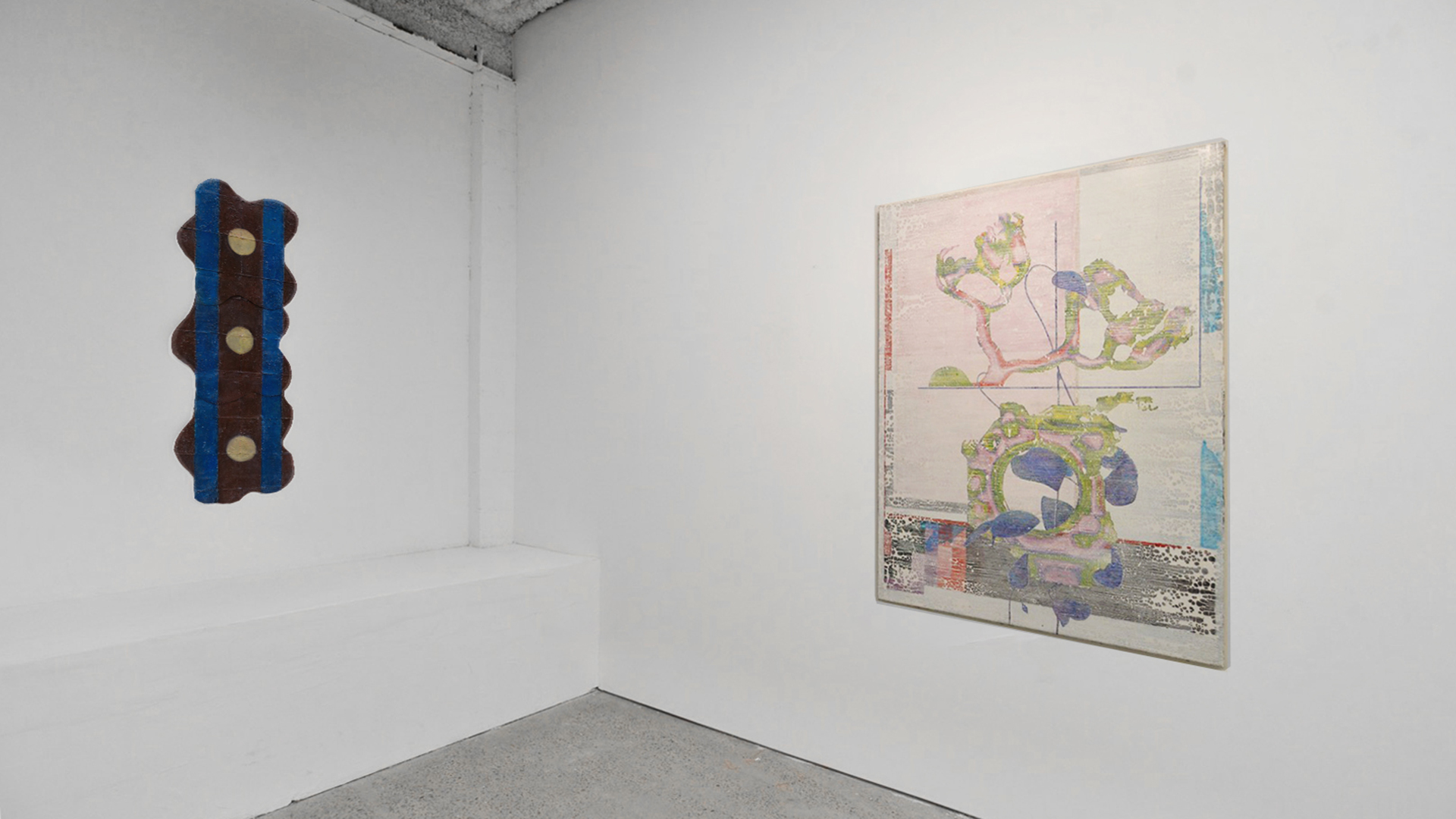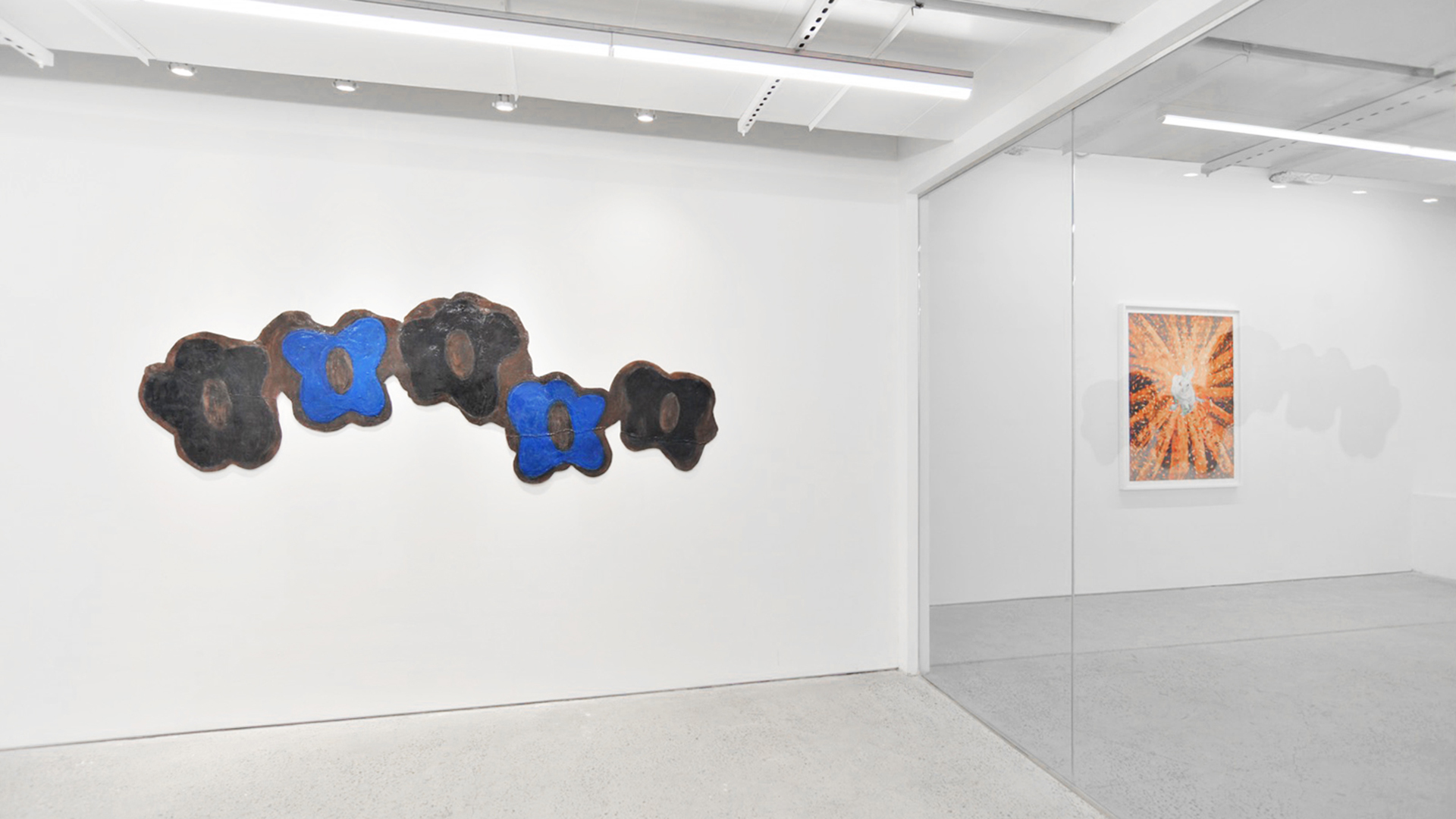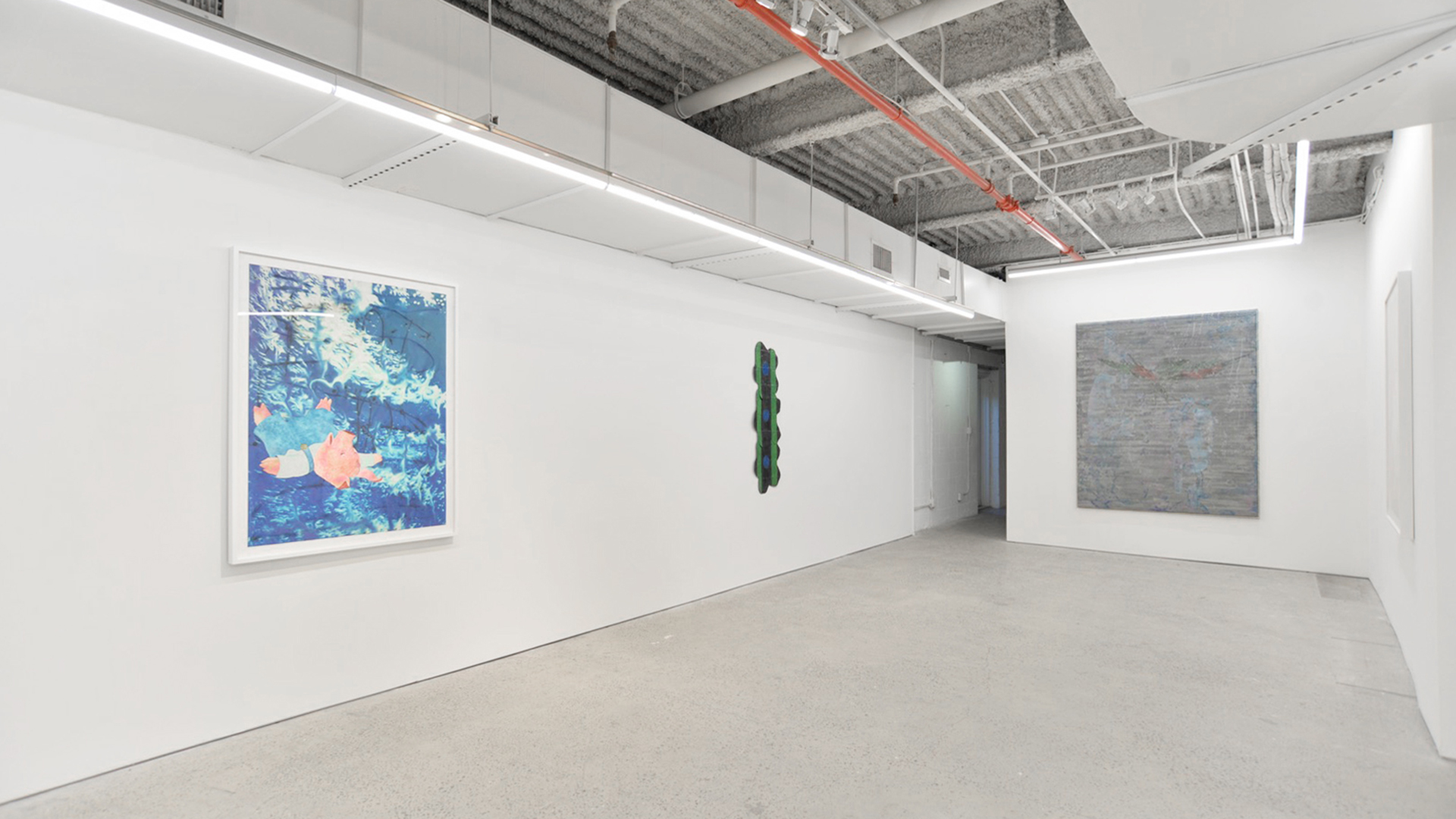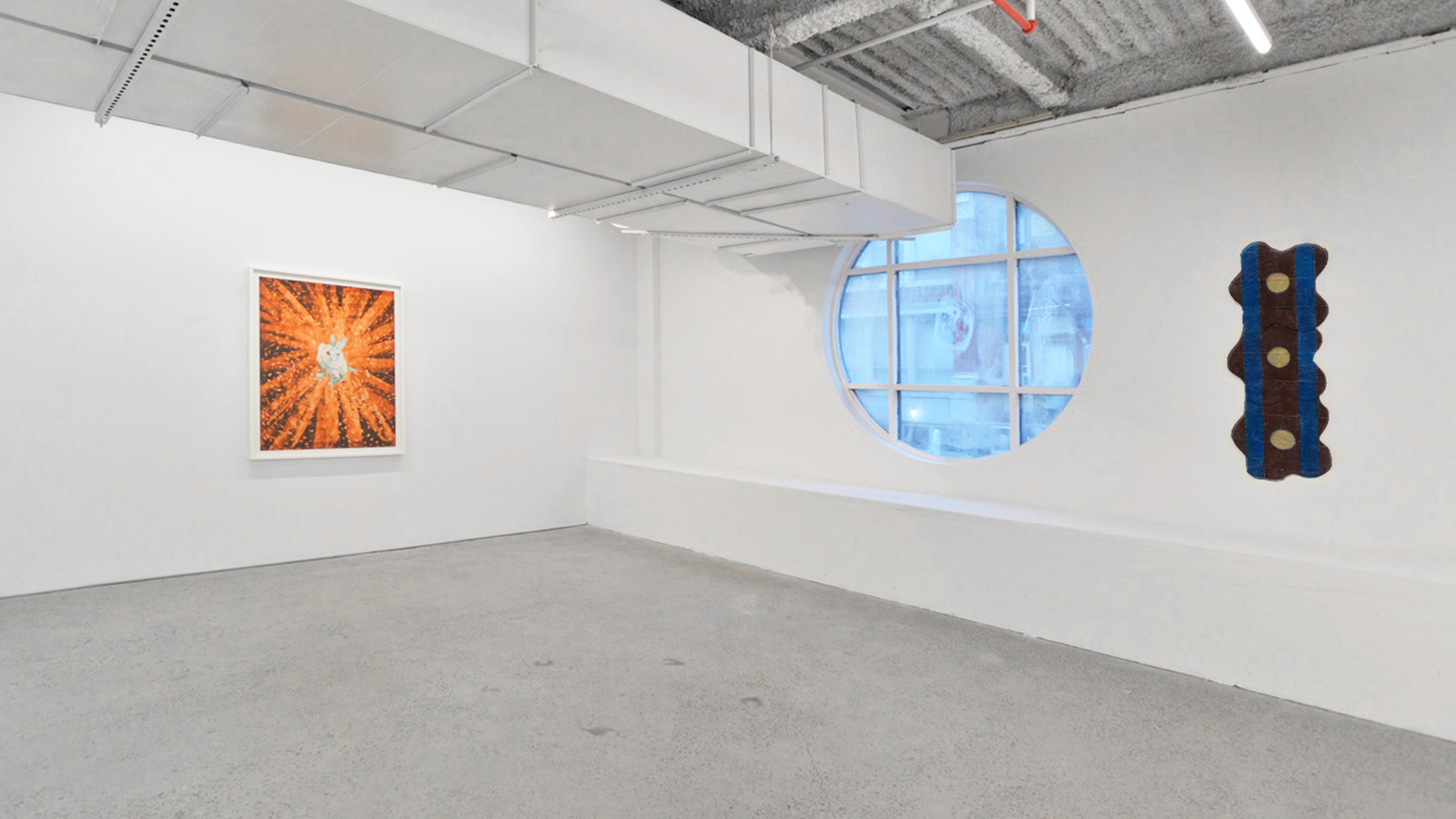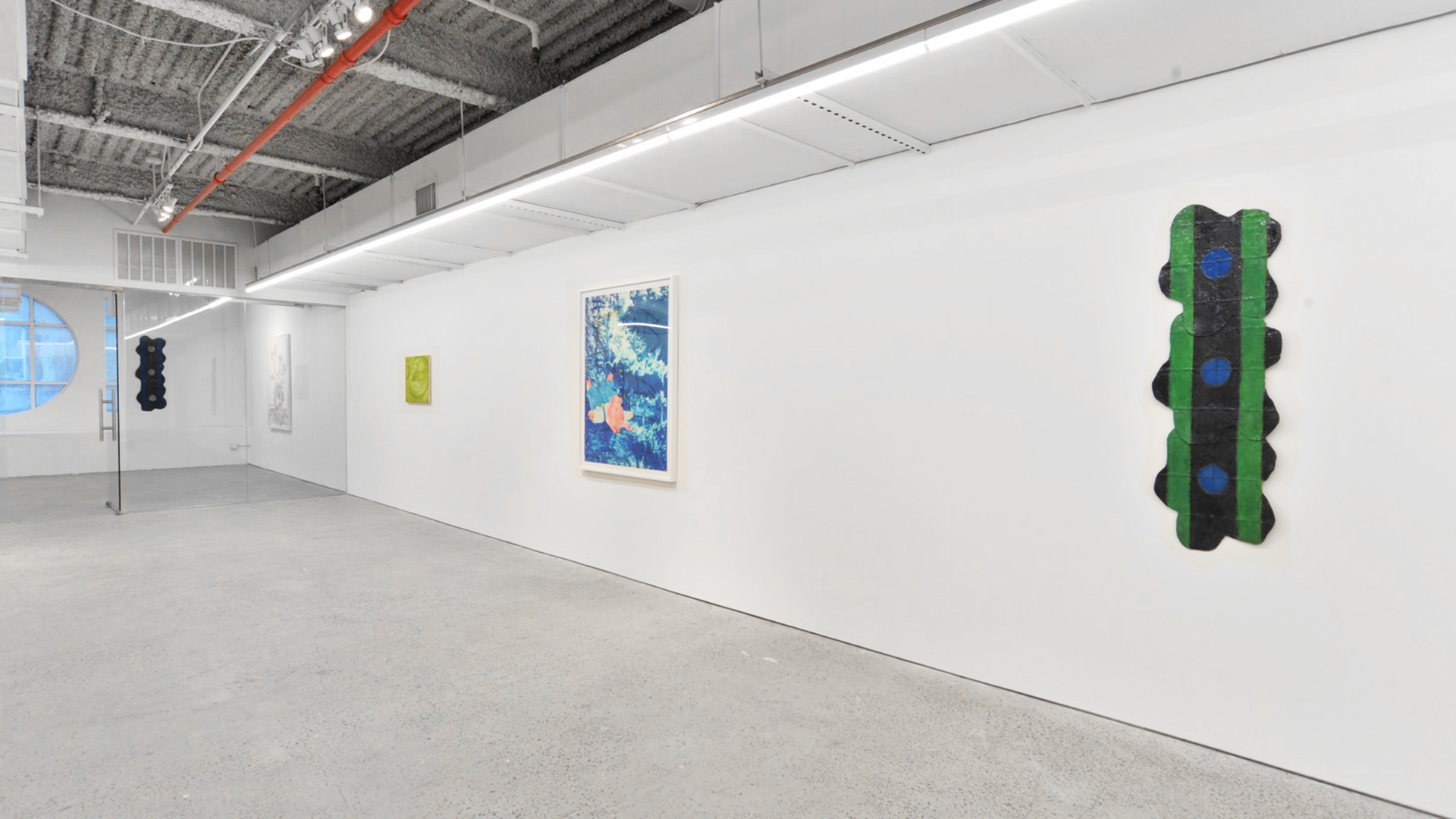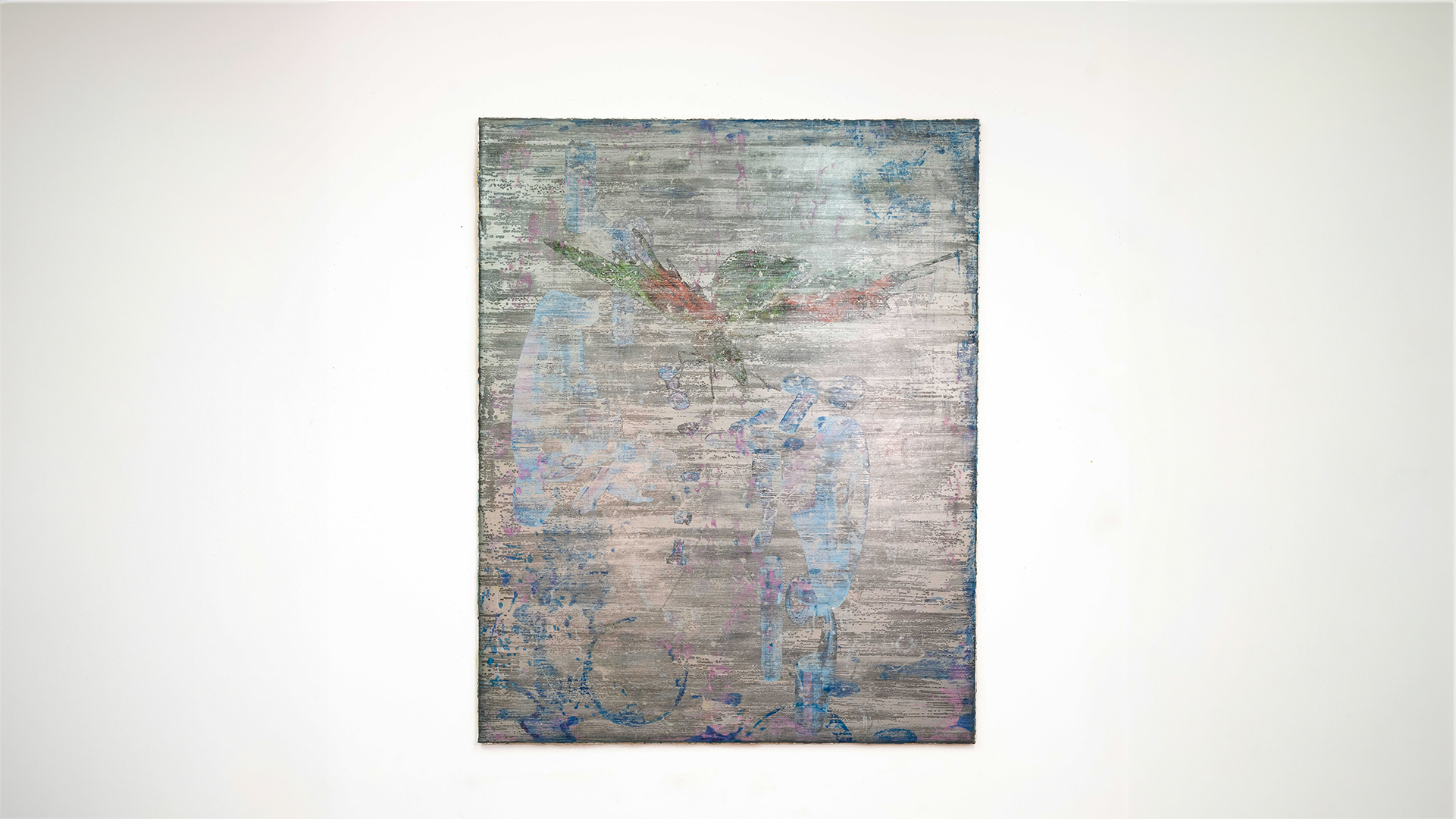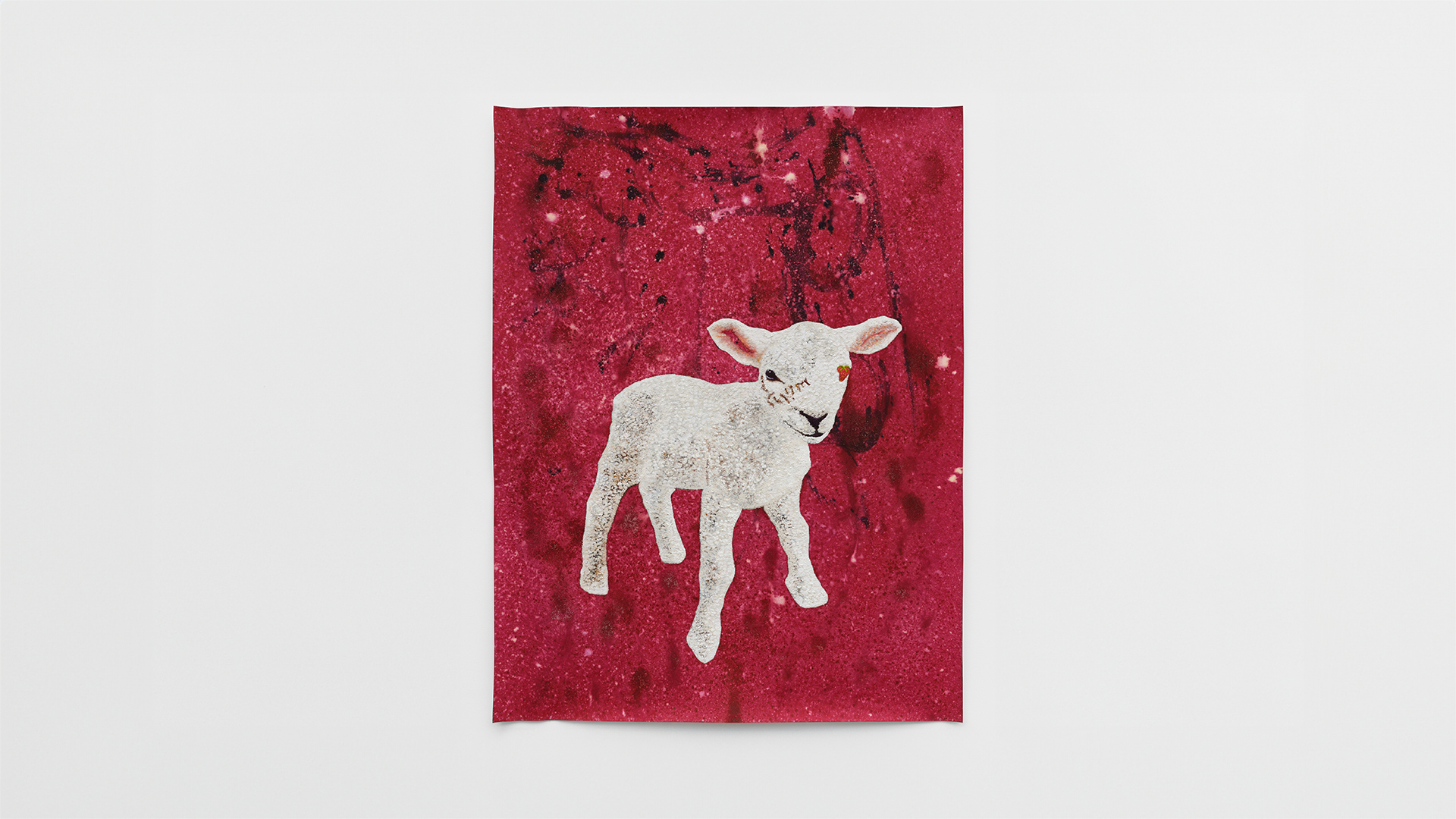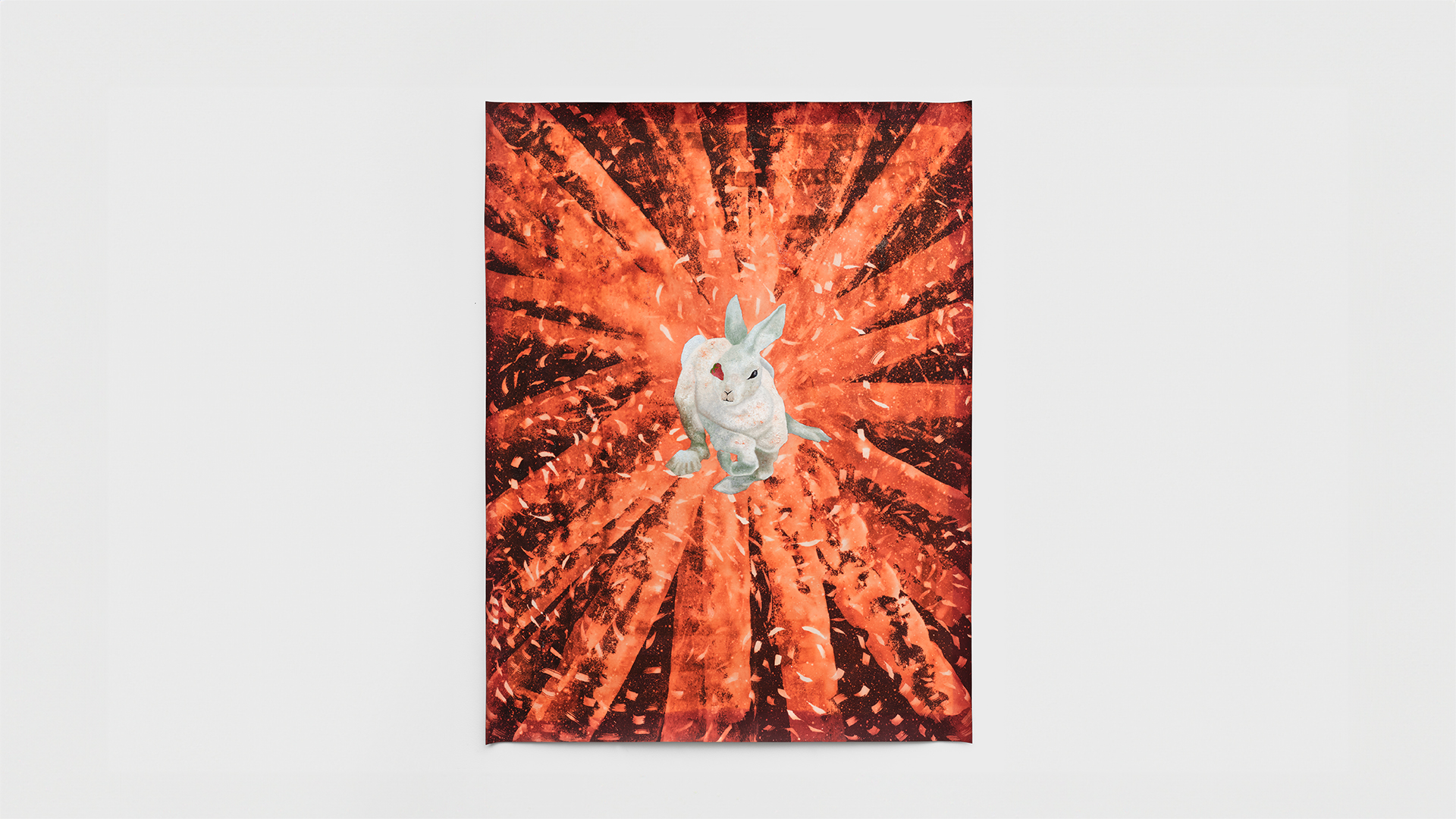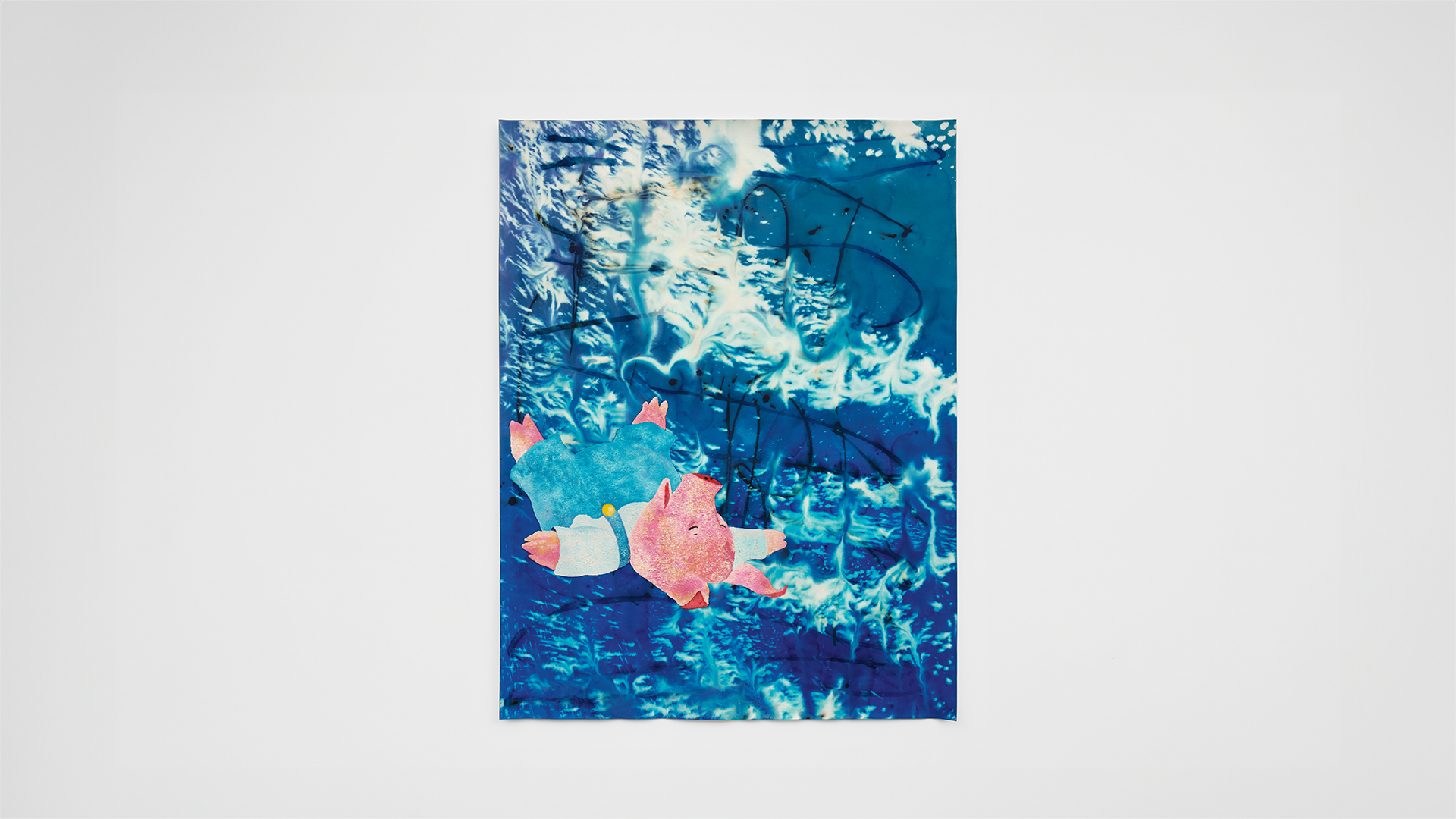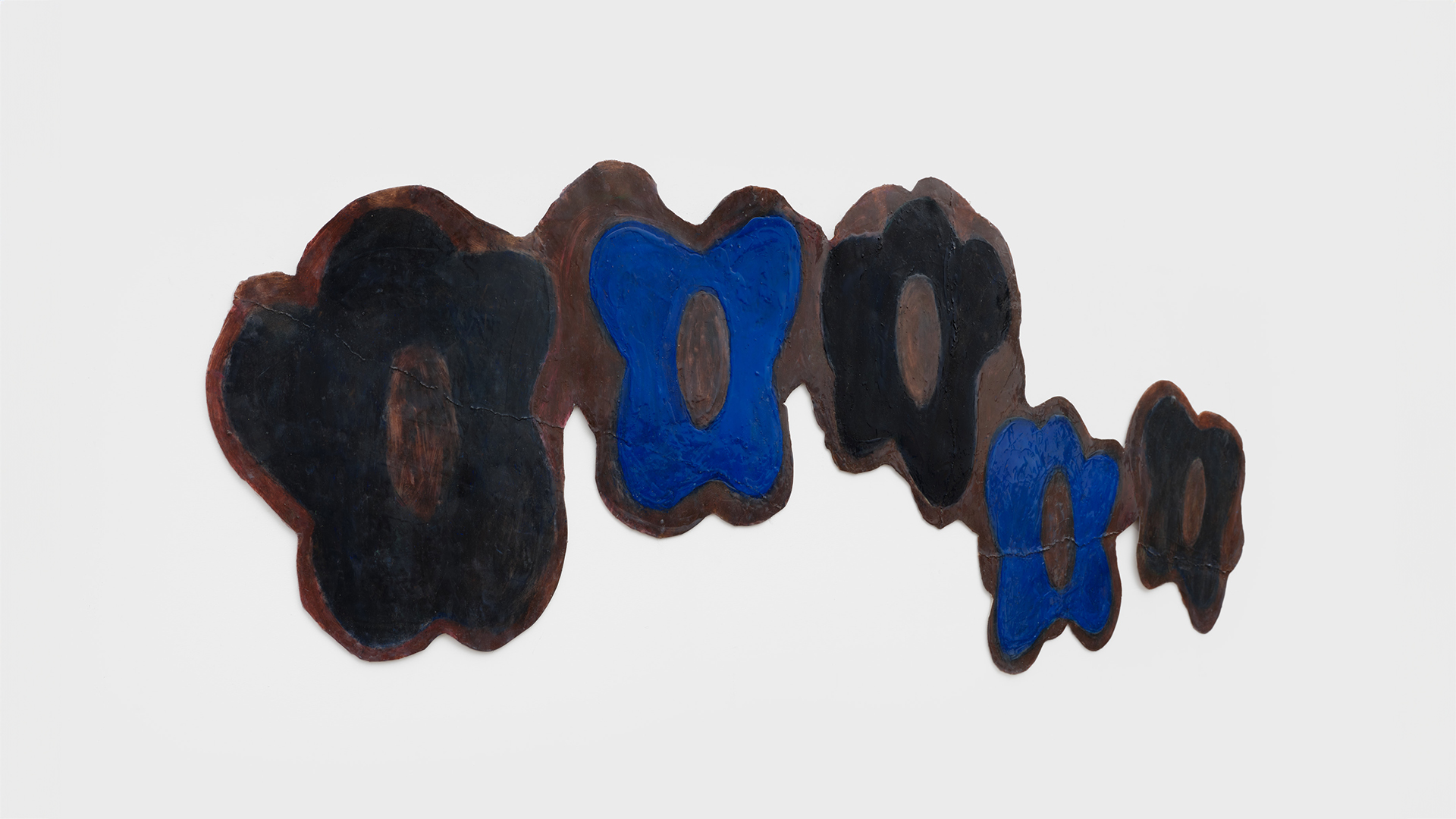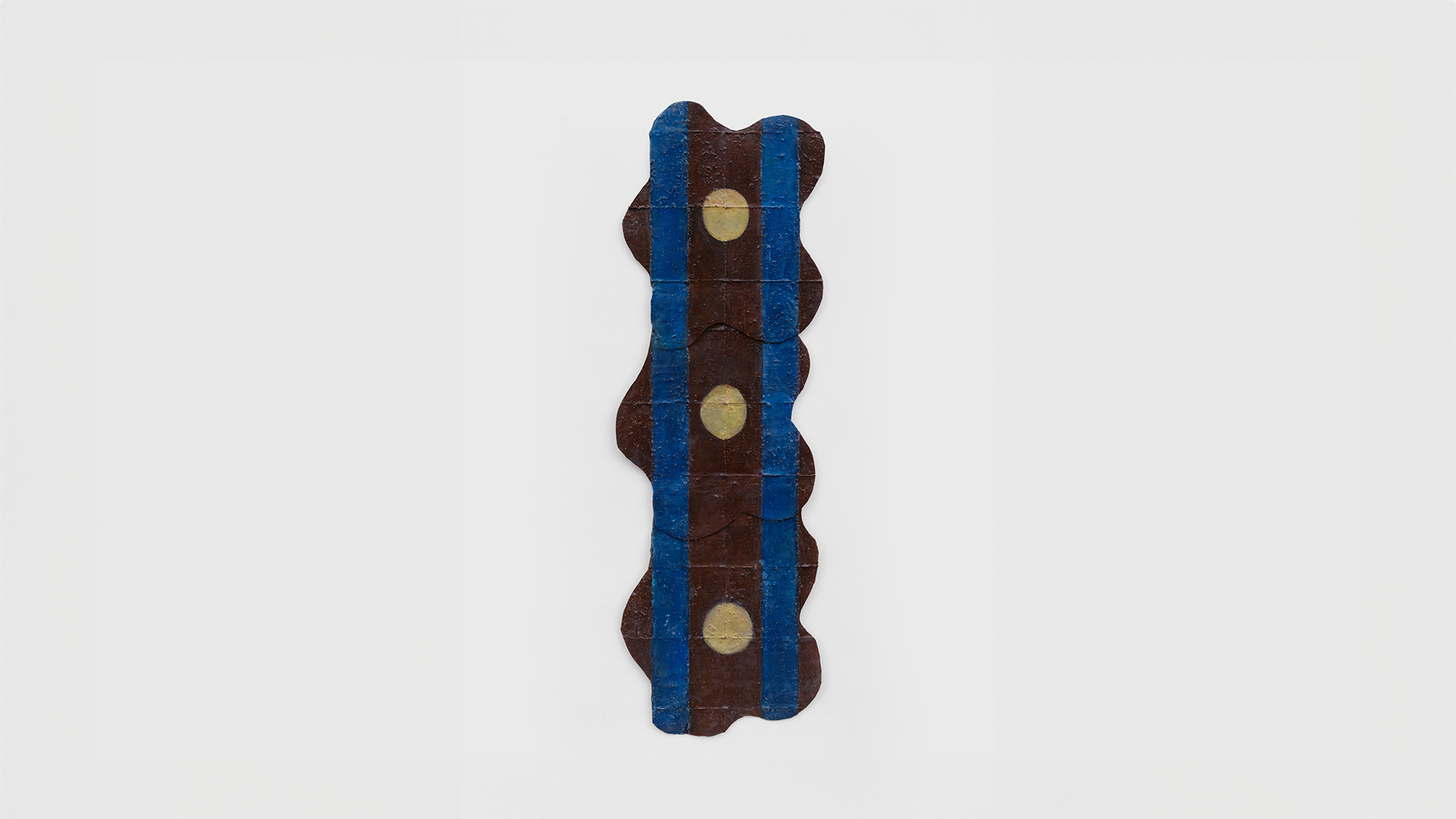PEEL:
JAN GATEWOOD
SARA MAYAKO GERNSBACHER
BRETT GINSBURG
NOVEMBER 10 - DECEMBER 31, 2022
Jan Gatewood, Sara Mayako Gernsbacher, and Brett Ginsburg each produce objects rife with surface tensions and formal experimentation. What drives an image and what can texture do? What should be obfuscated and what should be revealed?
Repetition and mark-making are routine concerns within Jan Gatewood's practice. He toggles abstraction and strategic figuration in an effort to create attractive non-spaces. A flexible methodology invites play and malleable rule-making, which he takes great advantage of. In his collaged approach, there's always room for the manifestation of something fresh. Gatewood is always seeking new avenues for rendering form and experimenting with textures. Salt-spurred crystalline forms occur when the mineral meets the fabric dye. Bleach is also complicit in the chemical reaction as it arbitrates salt breakdown and chaps the paper's surface. This process is Gatewood's effort to allow the materials to develop on their own terms within his controlled arena.
Gatewood's grounds are consistently populated by a cast of creatures, as if they were concrete antagonists pit against abstract environments. Each animal is plucked from an unknown context, without regard for origins. The near-constant invasion of images requires a parsing of information and a digestion of visual matter. In keeping with the visual invasion of the digital age, Gatewood seeks imagery that stirs his sensibility and contends with the effects of form. Each animal is rendered in a soft palette as opposed to the concentrated tones of Gatewood's backdrops. The ambiguity of these subjects thus springs forth out of the sublimity of naturalism alongside chemically produced environments.
Internal discussion and the topic is can rest be radical? bears the vestiges of letters against a mottled blue background. The letters are being swallowed into the abyss of color, which compromises their legibility. Language and meaning are unstable per Gatewood's design. The foregrounded pig lies eyes closed, faceup as though he has suddenly collapsed from a fit of exhaustion. In seeking clarification, the viewer might also be resigned to a similar fate. The possibility of clarity, however, sustains the viability of obfuscations. Furthermore, he applies signatures as idiosyncratic measures within his work. The strawberry recurs throughout his practice as a move to employ humor and ambiguous intention, seen here as ocular replacements for a lamb and a rabbit.
Sara Mayako Gernsbacher's slippery, multidimensional body of work is the outcome of a decade-long investigation into material and technique. She attaches pigmented silicone onto shaped canvases in order to create these hybridized forms. Color and texture yield supple forms encoded with carnal strangeness. These objects function somewhere between sculpture and painting with their subtle dimensionality. The potential for open associations within Gernsbacher's work gamifies the process of looking. Gernsbacher's unconventional structures are activated on the level of surface. Molded flora emerge as figurative bodies, the silicone material offering a corporeal dimension. This formal interest appeared out of a desire to communicate a feminine aspect, petals blooming from the drive of experimentation. Daisy chains spring forth with pockmarked surfaces in opposition to the historical treatment of flowers as merely “pretty” or “cute.” The modernist concern for exacted geometries and pristine surfaces is overdubbed by Gernsbacher's materialist approach. These skin-like textures provide a net for studio debris to fix onto her surfaces and the uneven silicone does much to circumstep Greenberg's idealized flatness. Her objects are amalgams of process and containment - displaying the traces of labor and implicating an endurance through Gernsbacher's series of operations. They are sealed in with a shiny edifice, becoming monuments unto themselves.
Brett Ginsburg's pursuit of embodiment is the crux of his work's technicality. He responds to the vibratory and unseen technical systems that proliferate our surroundings, engaging in the spatial navigation of infrastructural and ecological sites. These fissured images are the result of layered substrates as he endeavors to decipher just how many transformations a surface can withstand. They are corrupted and buried between layers of paint. He uncovers positive space through negative space, composing his objects in reverse like a monotype. This reversal consists of a backwards sequencing - the “top layer” is placed first then, after extensive procedures, the surface is prepped and the canvas is stretched.
Chance operations motivate Ginsburg's practice, establishing a range of viscosities that dissolve and reassemble his painted images beneath veiled layers of pigment. Crazed and dispersed brushstrokes are ultimately applied against plexiglass plates, prompting slick surfaces. This complex methodology developed out of a self-motivated extrapolation of techniques - particularly that of mold-making. Because there's a master plate designated for each working size, the drawings and redactions in other works are all absorbed into the next painting. Thus, each painting carries a trace of its precedents.
Signs and signals harbor Ginsburg's ongoing concern for indexicality and systems of regulation. In the aptly titled Study of Picabia's Paroxysm of Pain (1915) Ginsburg has incorporated a study of Picabia's 1915 machinist painting between lattices of pigment. This insertion of a readymade image absorbs a historical context in an effort to activate a new dimension within the practice. Here, legibility is dependent upon proximity - the image transforms from abstract at nose distance to clarified from afar.
Peeling is the removal of either unnecessary or damaged outer layers, resulting in a transformation of sorts. These three artists are united by their empirical curiosities, and the ability to provoke and engage viewers on multiple sensory levels. Where Brett Ginsburg applies and removes paint-loaded plates, Jan Gatewood effectively “peels” his subjects from their original situations and subjects them to his alchemical procedures. The materiality of Sara's Mayako Gernsbacher's work contributes to the appearance of skins extracted from bodies. One moves between the different conceptions of form with excited ease as they oscillate surface texture and imaginal clarity.
Text by Reilly Davidson
Jan Gatewood (b.1994 Aurora, Colorado) lives and works in Los Angeles and has recently had a solo exhibition with Smart Objects LA, has been included in group exhibitions most recently 'Hot Concrete: LA to HK' K11 Musea / Woaw Gallery, Group Two Shoe, curated by Mario Ayala at Public Access NY, Stockholm Sessions at Carl Kostyal in Stockholm, Best in Show at Jack Hanley Gallery, and at the Hammer Museum with Sonya Sombreuil. Jan Gatewood has been prominently featured in publications such as OFFICE, SSENSE, Amadeus, and L'OFFICEL. Gatewood has exhibited at Frieze NY and has an upcoming presentation at NADA Miami.
Sara Mayako Gernsbacher (b. 1989, Los Angeles, CA) lives and works in Los Angeles and received her BFA from Bard College in 2011. Gernsbacher has had solo exhibitions at Parrasch Heijnen Gallery in LA, Franklin Parrasch Gallery, NY and Shoot the Lobster in NY. Recent group exhibitions include Altman Siegel, SF (curated by Chris Johanson); Night Gallery, LA; Harpers, East Hampton (curated by Eddie Martinez); The Journal Gallery, NY; Roberts and Tilton, LA, Ballroom Marfa, Marfa TX, and MOCA Tuscon in Arizona. Gernsbacher has exhibited at the Dallas Art Fair, and NADA Miami Fair, Material Art Fair and ALAC. Press highlights include Artforum, LATimes, artilery, Blouin Art Info, and The Observer.
Brett Ginsburg, currently lives and works in New Haven, CT. He recently received an MFA in Painting/ Printmaking from Yale University (2022), attended the Saas-Fee Summer Institute of Art (2022), and received a BFA from the Kansas City Art Institute (2013). He is a current participant in the Interdisciplinary Art and Theory Program in Manhattan NY. Ginsburg completed a Research Fellowship at the Beinecke Rare Book & Manuscript Library, Yale University (2022). His work has been included in exhibitions at Jeffrey Deitch, New York, NY; Below Grand, New York, NY; Green Hall Gallery, New Haven, CT; The Bunker West, Malibu, CA; and the Museum of Arts and Design, New York, NY.
